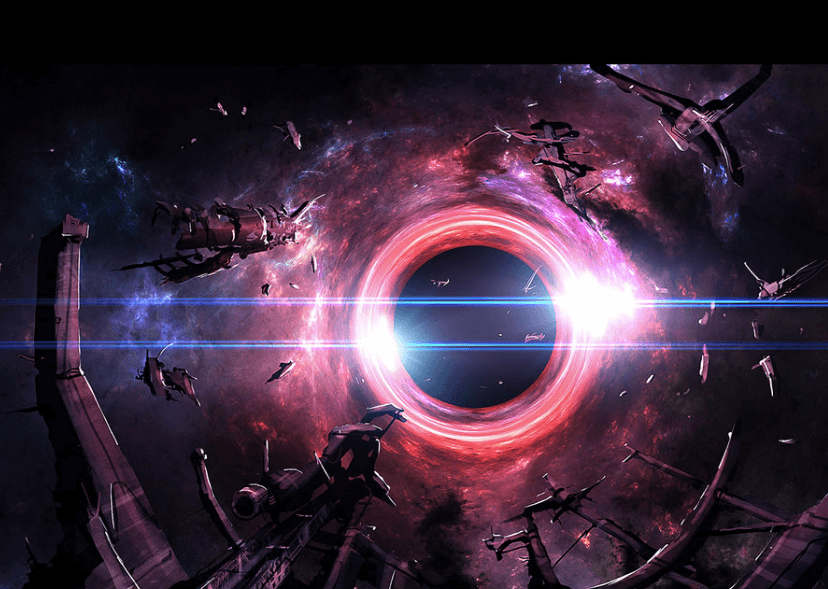Alice and Bob are characters that are often referred to in various quantum mechanic experiments. A while back Patrick Hayden, a professor at McGill then, envisioned what would happen if Alice had a black hole that was entangled with Bob’s quantum computer. He thought about Alice throwing a qubit into the black hole and Bob collecting the black hole’s Hawking radiation and processing it through the use of his quantum computer. Patrick figured that only a few qubits would be needed from the radiation in order to salvage Alice’s qubit by way of quantum computation.
This is quite an interesting concept. Patrick originally assumed the subsystem of the black hole ejected in the Hawking radiation was random, but later learned that it should take a time scaling like M log M (where M is the black hole mass in Planck units) for Alice’s qubit to get mixed up with the remainder of the black hole. Only once this mix had occurred would Alice’s qubit leak out into the Hawking radiation. Experts have estimated this would take just a millisecond for a solar mass black hole, which is fantastic compared to previous estimates that said it would take around 1067 years for Alice’s qubit to emerge.
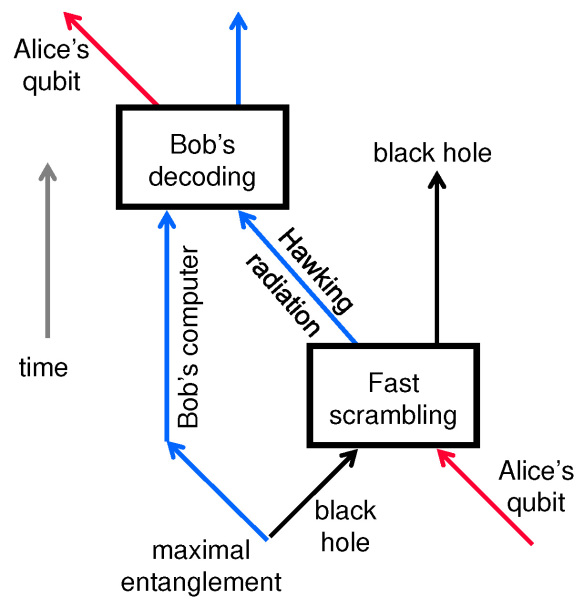
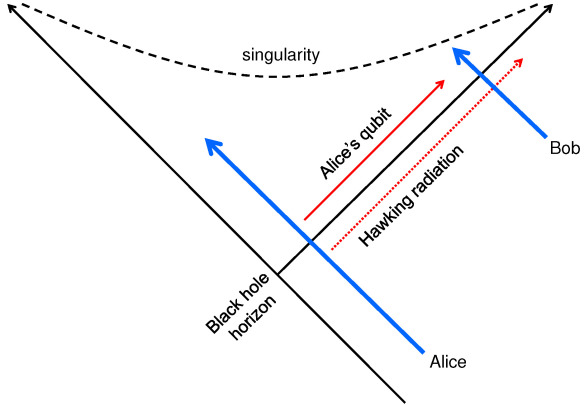
The short time scales involved recreated the idea behind the theory of Lenny Susskind’s book, ‘The Black Hole War.’ With the black hole’s geometry the way it is, it seems quite logical then that Bob could still distil a copy of Alice’s qubit from the Hawking radiation, jump back into the black hole next to Alice, who could then throw her copy of the qubit over to Bob. But, then surely Bob would have two copies of Alice’s qubit, wouldn’t he?
Juan Maldacena has recently carried out research that proposes a different way to think about this issue. In his work, he and colleagues decided to strip down the Hawking radiation decoding scenario to a much simpler model for easier analyzing. It shows that although it may appear, there are two copies of hr same qubit, there is in fact just one and it’s either inside the black hole or outside. So in effect, Alice’s copy inside is destroyed as soon as Bob extracts his copy on the outside.
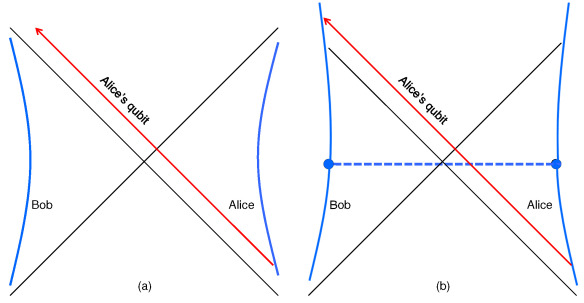
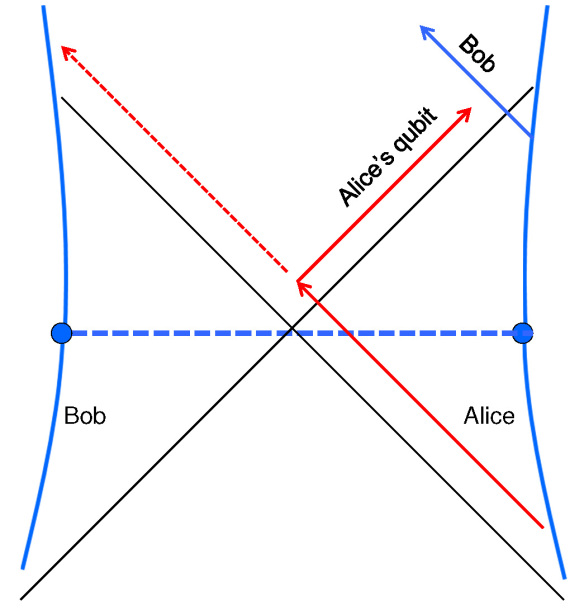
Several ideas are invoked to reach this conclusion. First is the analyzing of the problem in the case of anti-de Sitter space. Second, we need to envision Bob’s quantum computer as a separate black hole that’s entangled with Alice’s. When any two black holes in anti-de Sitter space are entangled, it generates a wormhole that connects the interiors of them both. Thirdly, the entangled pairs were in a special quantum state called the thermofield double state, which simply means that the wormhole connection binding these two black holes is as short as possible. Lastly, we imagine there is only one spatial dimension.
One important feature of the wormhole is that it’s not traversable, so when Alice’s qubit gets thrown into the black hole and goes into the wormhole, there’s no coming out the other end of it. The qubit is now stuck inside. However, a recent paper suggested that Bob extracts a small amount of Hawking radiation from Alice’s black hole and inserts it into Bob’s quantum computer by a quantum wire, making the wormhole traversable.
More News to Read

